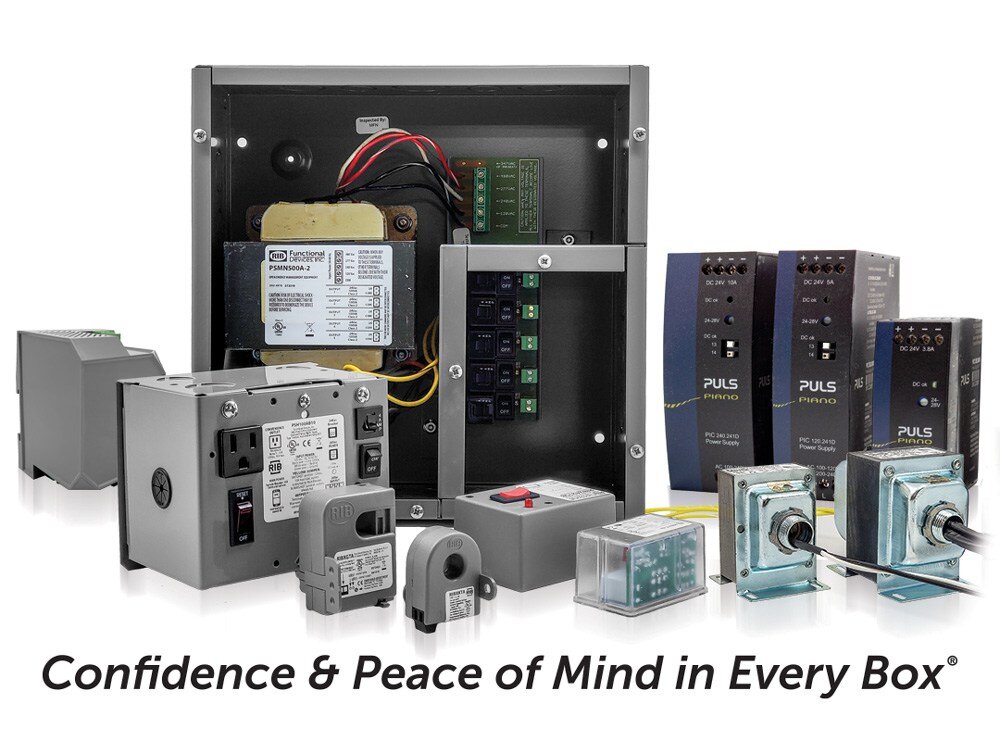Keeping Data Centers Cool: How HVAC Controls Improve Efficiency and Reduce Costs
Data centers produce enormous amounts of heat. If they get too hot, though, the sensitive equipment housed within can fail, causing downtime, increased operating costs, and potential fires.
Proper airflow management is essential for data centers to ensure the correct temperature and humidity. This post explores how HVAC controls and relays can improve operational efficiency and sustainability in data centers.
Here at Functional Devices, we have extensive experience helping facility managers maximize HVAC efficiency. Our preassembled “Relay In a Box®” is the perfect blend of versatility and functionality, allowing you to optimize and automate your building easily. Our team is available to discuss your needs, so give us a call!
The Challenge of Cooling Data Centers
The average data center can produce 20 MW of heat, or enough to power 16,500 homes. Data center managers must properly cool servers, storage systems, and other components, or else they risk:
- Increased energy costs
- System failures
- Equipment degradation
- Fires
For this post, we’ll stick to HVAC controls. Let’s explore how this system is crucial to data center operational efficiency.
The Role of HVAC Controls and Relays in Data Center Cooling
The HVAC controls in data centers do much more than blow cool air on servers all day. While that’s certainly part of it, these specialized systems house components that work together to maintain the precise environmental conditions necessary for properly operating sensitive equipment.
Components of Data Center HVAC Controls
Here are the parts of HVAC controls needed to control temperature and humidity in a data center:
- Computer room air conditioners and handlers (CRAC/CRAH) cool computer equipment and achieve various cooling densities.
- Chillers cool water utilized by CRAH units.
- Cooling towers help chillers operate efficiently by dissipating heat from the chilled water.
- Air distribution systems deliver air properly to computer equipment and efficiently remove hot air.
- Hot aisle/cold aisle containment separates hot and cold airflow, ensuring cold air reaches server intakes and hot air reaches cooling units.
- Raised floors allow for cables, wires, cooling elements, and proper airflow management.
- Relays switch power on and off to different HVAC components.
Relays are necessary for any industrial-scale system, whether HVAC, security, or lighting. In data centers specifically, relays are essential in controlling motors, protecting sensitive equipment, and enhancing the building automation system (BAS). Automation allows for more precise and responsive control of temperature and humidity.
Benefits of HVAC Controls in Data Centers
A properly designed and implemented HVAC control system in a data center brings many benefits besides cooling the equipment enough to keep it functioning optimally.

With an efficient and automated HVAC system cooling a data center, managers can rest easy knowing they are protecting their computer equipment and bottom line.
Best Practices for Integrating HVAC Controls into Data Centers
While we won’t get into all the specifics for implementing HVAC controls in a data center, here are some basic best practices to follow when designing or updating this important system:
- Conduct a comprehensive cooling audit to determine specific needs.
- Select the right HVAC controls and relays for your data center size and design.
- Integrate HVAC controls with your building management systems (BMS) for centralized monitoring.
- Integrate HVAC controls with your BAS for operating efficiency.
- Perform routine maintenance and calibration.
These are general best practices. To ensure proper integration, consult all the necessary parties, such as electrical engineers, manufacturers, consulting firms, and construction companies.
Keep Your Cool With Functional Devices
HVAC controls and relays are integral parts of data centers, and choosing the correct configurations and devices helps ensure better operating efficiency, sustainability, and reduced costs.
Functional Devices has helped many companies and businesses looking to upgrade or install efficient HVAC systems. We lead the industry with our unique relay designs and test every device before it leaves our facility. Explore our different relay options, and contact us with your questions. Our engineers would love to chat with you about your data center HVAC controls and how we can help!
About Functional Devices, Inc.

Leaders in the Industry
The world was a very different place in 1969, when Functional Devices, Inc. was founded by engineer and electronics enthusiast Albert Rittmann, but our commitment to evolution and versatility has allowed us to remain a key player in the building automation and lighting controls industry for over 55 years.
Today, as we embrace emerging technology and lean into the future of building automation, our products are still manufactured in the USA with global materials, and we are still committed to our mission of enhancing lives in buildings and beyond. Back in 1969, Albert could never have predicted the technological advances we live with today, but with the groundwork he laid and the vision of his successors, Functional Devices has adapted and grown into a company that can handle anything.
